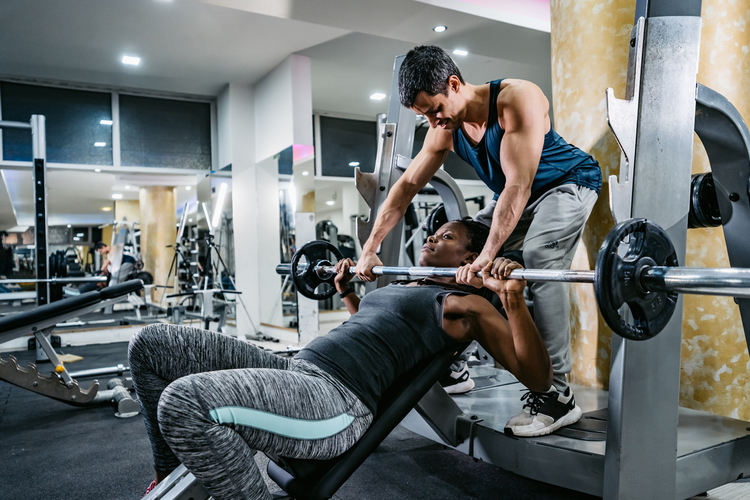The Secret to Eliminating Tendinitis
If You Haven’t Had it Yet – You Will Soon Enough
Tendinitis. It affects just about everyone at some point in their lives – both active people and non-active people alike. Sometimes it’s called Tendinosis or Tendonosis as well. No matter what you call it, it is painful and can completely prevent you from performing certain actions if it’s bad enough.
What’s worse is that some physicians will tell you that once you have it, you’ll never really get rid of it as even if it gets better, the underlying “inflammation” will linger, ripe for a recurrence.
I’ve had tendinitis in several places – Achilles tendons, Triceps tendons (what most people call elbow pain), Forearms and Biciptal tendon (which most everyone confuses with “shoulder” pain).
Several years ago, I developed tendinitis in my elbows (Triceps tendons) from heavy weight training. – Looked and looked for an answer. All of the advice was effectively worthless.
Usually the acronym NICER is used by physicians to describe the recommended treatment protocol for tendinitis injuries. It stands for NSAIDs (Non Steroidal Anti Inflammatory Drugs), Ice, Compression, Elevation, and Rest.
It might help a bit with pain but it will do next to nothing for healing and absolutely nothing for making it stronger so that its much less likely to happen again.
Avoid Cortisone Injections
The only conventional medical treatments that do provide relief are cortisone injections. Unfortunately, they only work in the short term. Cortisone can often make the pain go away pretty quickly but it makes the tissue weaker and more likely to get re-injured. If multiple injections are used it can actually screw up your tendons big time. Just ask any retired football player who’s had many injections to a single area.
There is only one sure fire fix for tendinitis that I know of.
The Answer
After years of trying to find an answer, I came across a study that talked about using eccentric contractions to heal chronic tendinitis. Eccentric contractions occur when you lower a weight that’s been lifted. This is opposed to concentric contractions which occur during the lifting portion of a repetition. You can read about the study itself if you want, but I’ll give you the nutshell version.
Researchers essentially took a group of people who had suffered from CHRONIC Achilles tendinitis for YEARS and had them place their toes on the edge of a step. They used both calves to lift themselves up onto their tip toes and used a single calf (whichever suffered from the tendinitis) to lower themselves slowly. This places an eccentric load on the injured tendon and by doing it repeatedly over a few days or weeks, they were able to resolve the tendinitis.
I wondered if I could use this same technique on my elbows and decided to try it with a high pulley cable attachment in the gym. It worked like magic! A problem that had been plaguing me for months resolved itself in a week and a half. Even more amazing was that after three days, it was 80% better. It’s a technique that produces immediate and very gratifying results.
Why on earth it’s not more well known can only be explained by the fact that it’s a relatively recent discovery.
I have since used this technique of eccentric training to eliminate tendinitis on several areas as I mentioned (Achilles tendons, Triceps tendons, forearms and Biciptal tendon) with 100% effectiveness. It’s very easy to use on some body parts (Achilles tendons, Triceps tendons) and harder for others (forearms and Bicipital tendons).
How to Do It For Yourself
Here is the exact protocol I used:
I will use the right Triceps tendon as my example of an injured body part.
Position yourself in front of a high pulley attachment that has enough weight on it to allow you to get 12-15 eccentric reps (the lowering portion). Attach a horseshoe handle to the cable and put your right hand in the horseshoe with the palm down. Use your left arm to pull the handle down and use your right arm alone to resist the weight going back up. Keep the movement fairly slow and make sure you are using the injured parts to control the weight. Perform 12-15 eccentric reps, using your uninjured arm to pull the weight down and the injured one to resist it on the eccentric portion. The weight should be heavy enough that you pretty much fail in the 12-15 rep range. It doesn’t have to be absolute failure but you can’t use tiny weights and expect any results. You need to really load the tendons and for that you’ll need some pretty good weight. You can make your first set a bit lighter to warm up but by the third set you should be using enough weight that you pretty much have to stop after the recommended reps are complete.
Do three sets of 12-15 reps once (or twice a day if possible). You might notice some soreness during and immediately after the session but within ten minutes of completing it, your arm will no longer hurt and will feel “different”.
You can deviate slightly from what I’ve written as it doesn’t have to be done exactly as I’ve outlined.
The results will come very fast – it will be MUCH better within about 2-5 days and sometimes perfectly healed. I’ve never had to do it for longer than two weeks to get back to 100%. you will also notice that you can train the body part with heavy weights again very soon and it will be much more resistant to injury. If you ever feel it coming back, simply re-start the eccentrics.
You can modify the above for whatever body part ails you. Many times, you won’t even have to use any equipment that you can’t find in your house. Just make sure that whenever you do your eccentrics, you use the exact part of the body that is ailing you to control the eccentric portion. You want to use the load to STRESS the exact body part that’s bothering you.
Basically, the exact opposite of what your doctor will tell you to do with it. While I am not a physician and everything here is just my opinion, I also have many friends that have fixed their tendinitis with these exact same techniques.
You’ll feel great knowing that you have total control over the healing process. I have never found anything else that worked.
Here is an article on a device I’ve never tried but I think it might work well and uses the same principle I’ve discussed: Easy Fix for Tennis Elbow
Best Defense is a Good Offense
Perhaps the best thing you can do to AVOID tendinitis in the first place is to reduce inflammation and glycation in your body. You can do both by staying very lean, reducing the carbohydrates you eat and by making sure you get undamaged Omega-3 AND Omega-6 fats. There are a whole host of other health benefits beyond the lack of tendinitis.
When I was following a conventional high carb bodybuilding diet, I was much more prone to inflammation. After I reduced my carbohydrate intake, my incidence of tendinitis went down dramatically which I think is due to reduced systemic inflammation.


